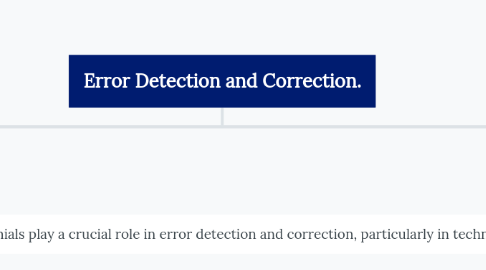Error Detection and Correction.
by منال خالد


1. Error Detection
1.1. Definition*: Identifying errors in data transmission or storage.
1.1.1. Types
1.1.1.1. Parity Check
1.1.1.1.1. Definition: Adding a parity bit to data for error detection.
1.1.1.2. Checksum
1.1.1.2.1. Definition: Sum or hash function used to verify data integrity.
1.1.1.3. CRC
1.1.1.3.1. Definition: Polynomial-based method for error detection.
2. Error Correction
2.1. Definition*: Fixing detected errors to ensure data integrity.
2.1.1. Types:
2.1.1.1. Single-bit
2.1.1.1.1. refers to a situation where only one binary digit (bit) within a data unit changes its value, either from 0 to 1 or vice versa, due to noise, interference, or other factors.
2.1.1.2. Hamming code
2.1.1.2.1. Definition: Error correction code using parity bits.
